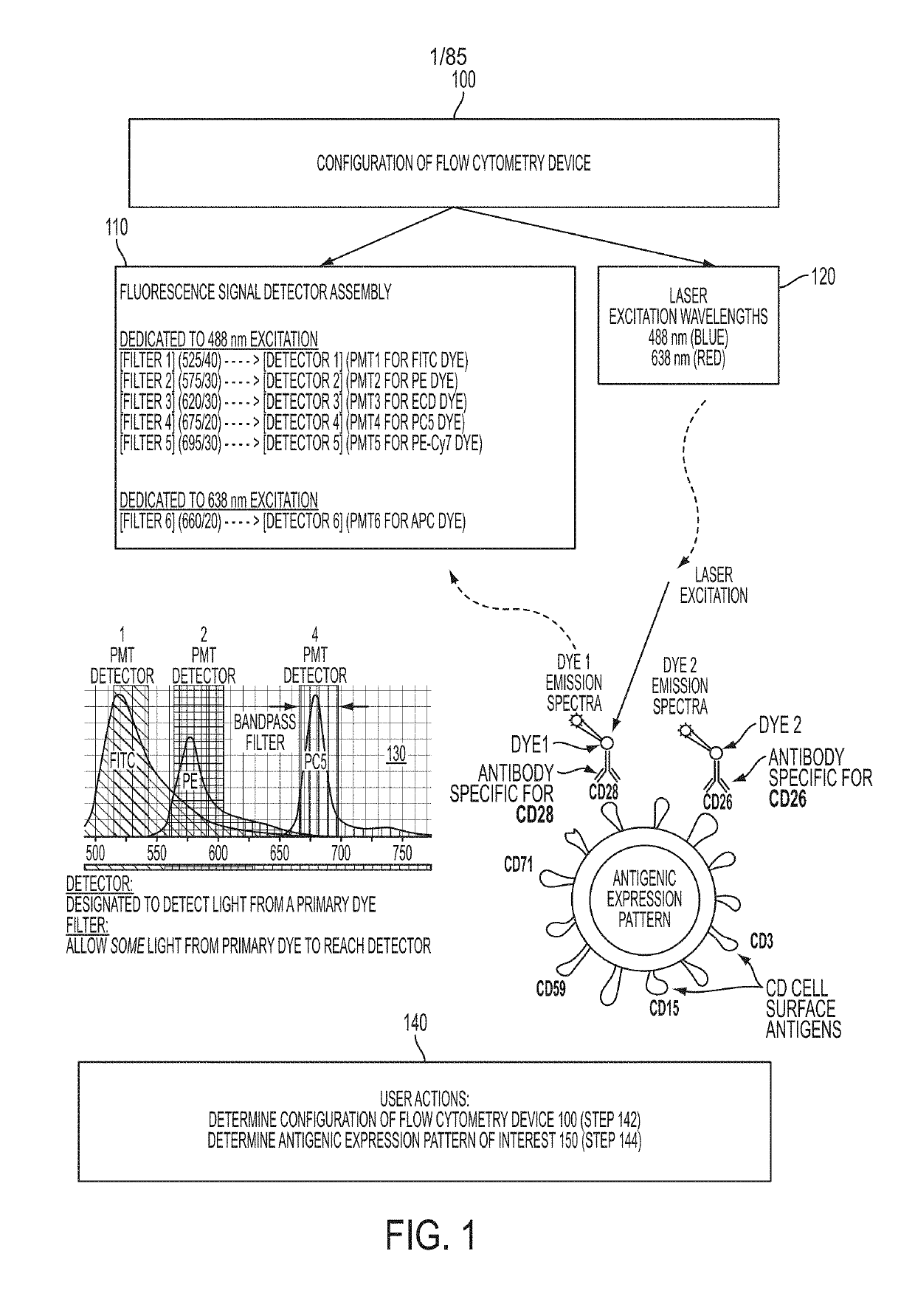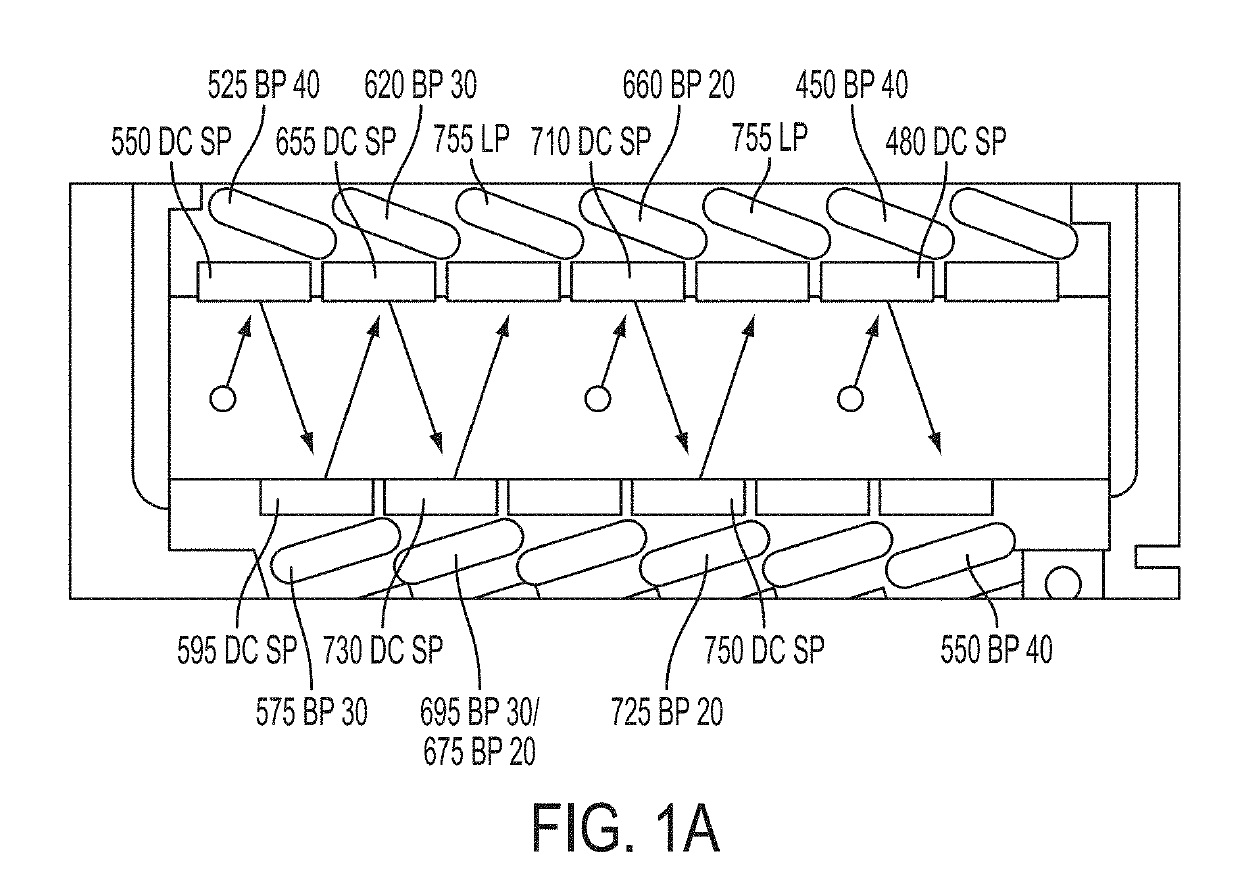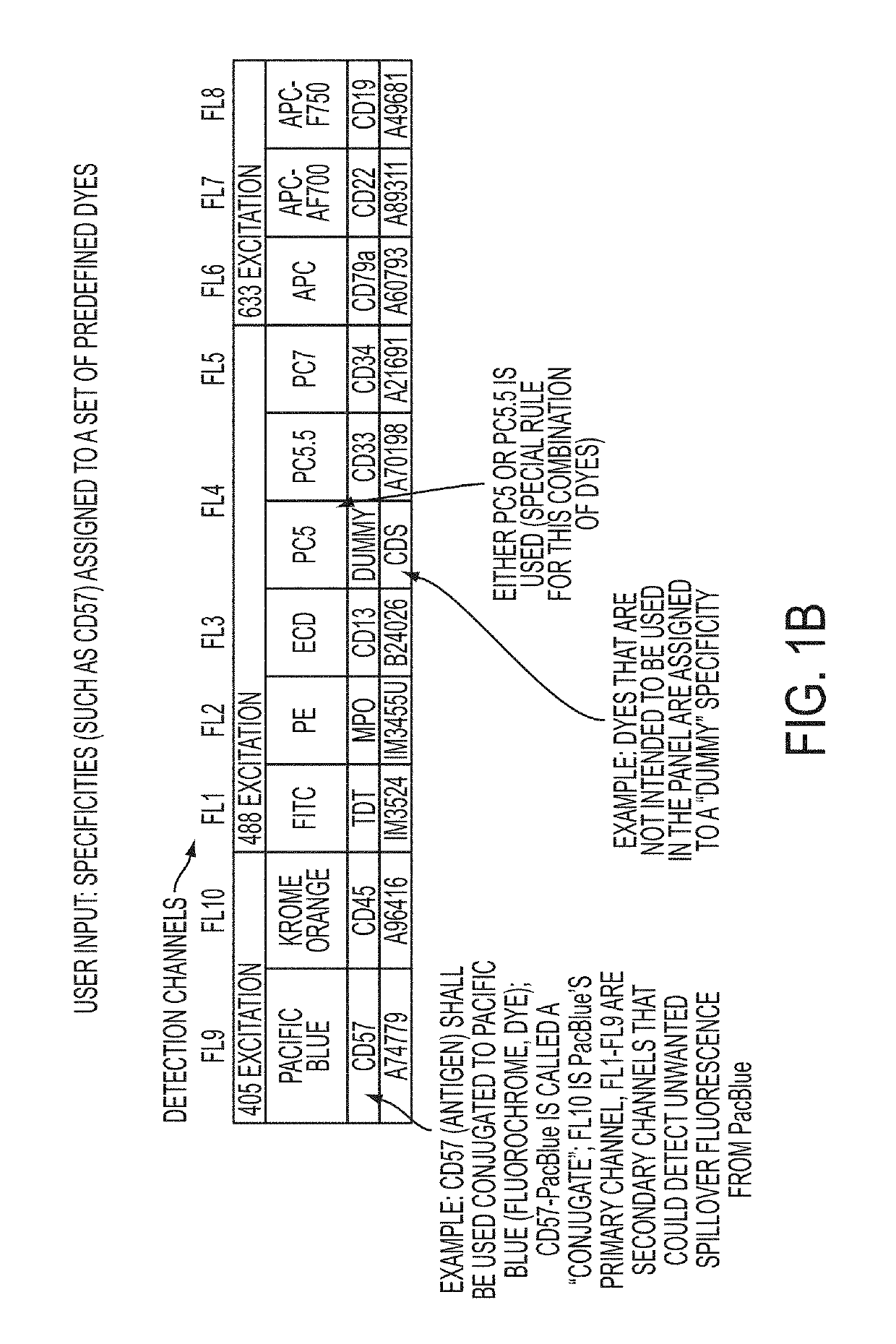Systems and methods for panel design in flow cytometry
a flow cytometry and panel technology, applied in the field of system and method for evaluating cells of biological samples, can solve the problems of difficult to determine whether a particle belongs to a positive or negative population, and achieve the effects of improving sensitivity, reducing downtime, and maximizing lab productivity
- Summary
- Abstract
- Description
- Claims
- Application Information
AI Technical Summary
Benefits of technology
Problems solved by technology
Method used
Image
Examples
Embodiment Construction
[0057]Flow cytometry often involves labeling a particle sample with fluorochrome dyes, and then evaluating properties of individual particles of the sample using various fluorescence detectors specific for various wavelengths. In this way, it is possible to obtain quantitative and qualitative data about the particle sample. For example, different cell surface receptors on a blood cell can be labeled with different fluorochrome dyes, and a flow cytometer can use separate fluorescence channels to detect the resulting light emitted. In exemplary embodiments, multiple excitation light wavelengths can be used in conjunction with multiple fluorochrome dyes and multiple fluorescence detectors, so as to simultaneously obtain several parameters of a sample. In particular embodiments, distortion factors resulting from the conjunctive use of multiple fluorochrome dyes and multiple fluorescence detectors can be quantified.
[0058]The term “event” as used herein can refer to a particle as it passe...
PUM
| Property | Measurement | Unit |
|---|---|---|
| wavelengths | aaaaa | aaaaa |
| wavelengths | aaaaa | aaaaa |
| wavelength | aaaaa | aaaaa |
Abstract
Description
Claims
Application Information
 Login to View More
Login to View More - R&D
- Intellectual Property
- Life Sciences
- Materials
- Tech Scout
- Unparalleled Data Quality
- Higher Quality Content
- 60% Fewer Hallucinations
Browse by: Latest US Patents, China's latest patents, Technical Efficacy Thesaurus, Application Domain, Technology Topic, Popular Technical Reports.
© 2025 PatSnap. All rights reserved.Legal|Privacy policy|Modern Slavery Act Transparency Statement|Sitemap|About US| Contact US: help@patsnap.com



